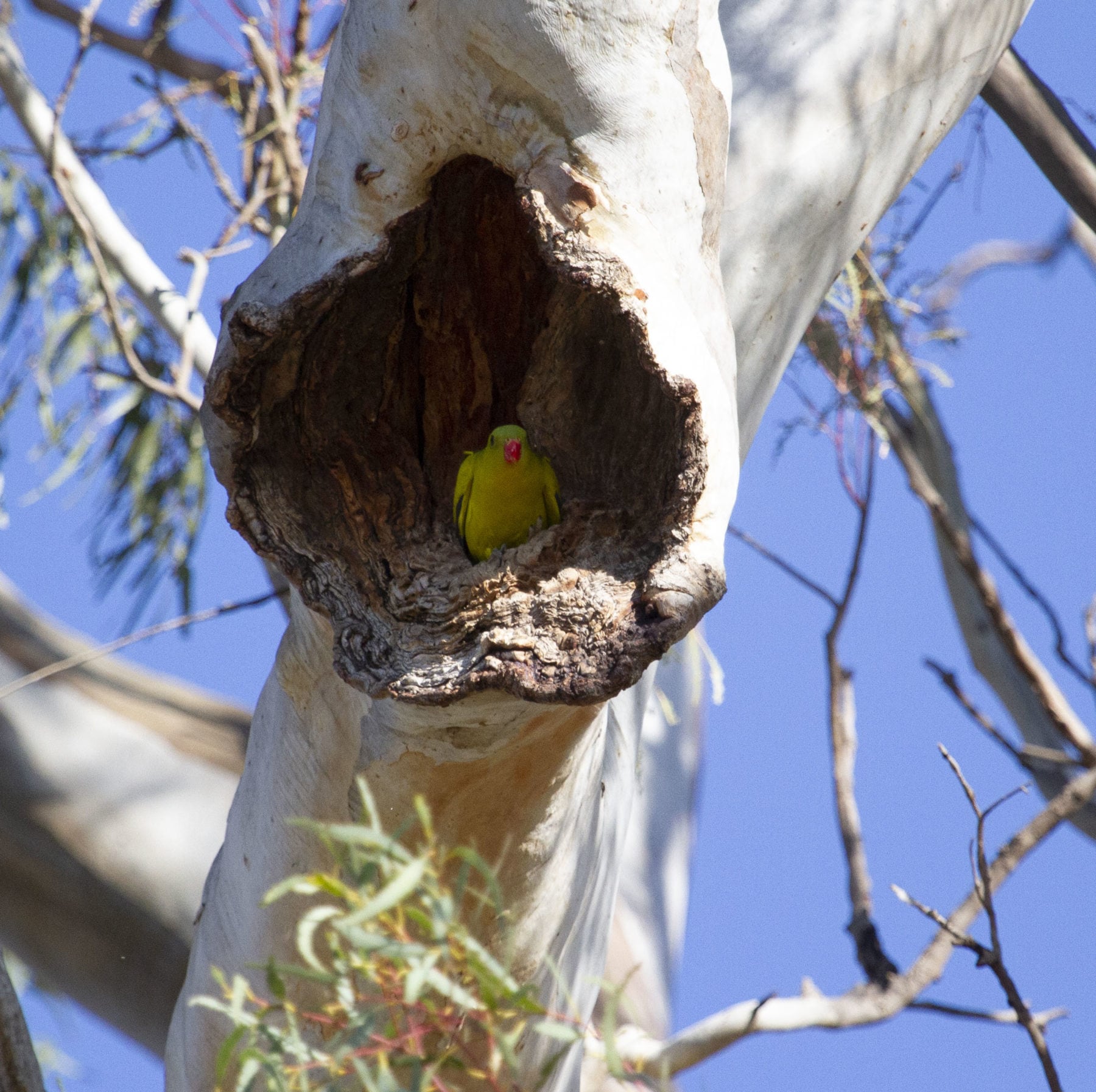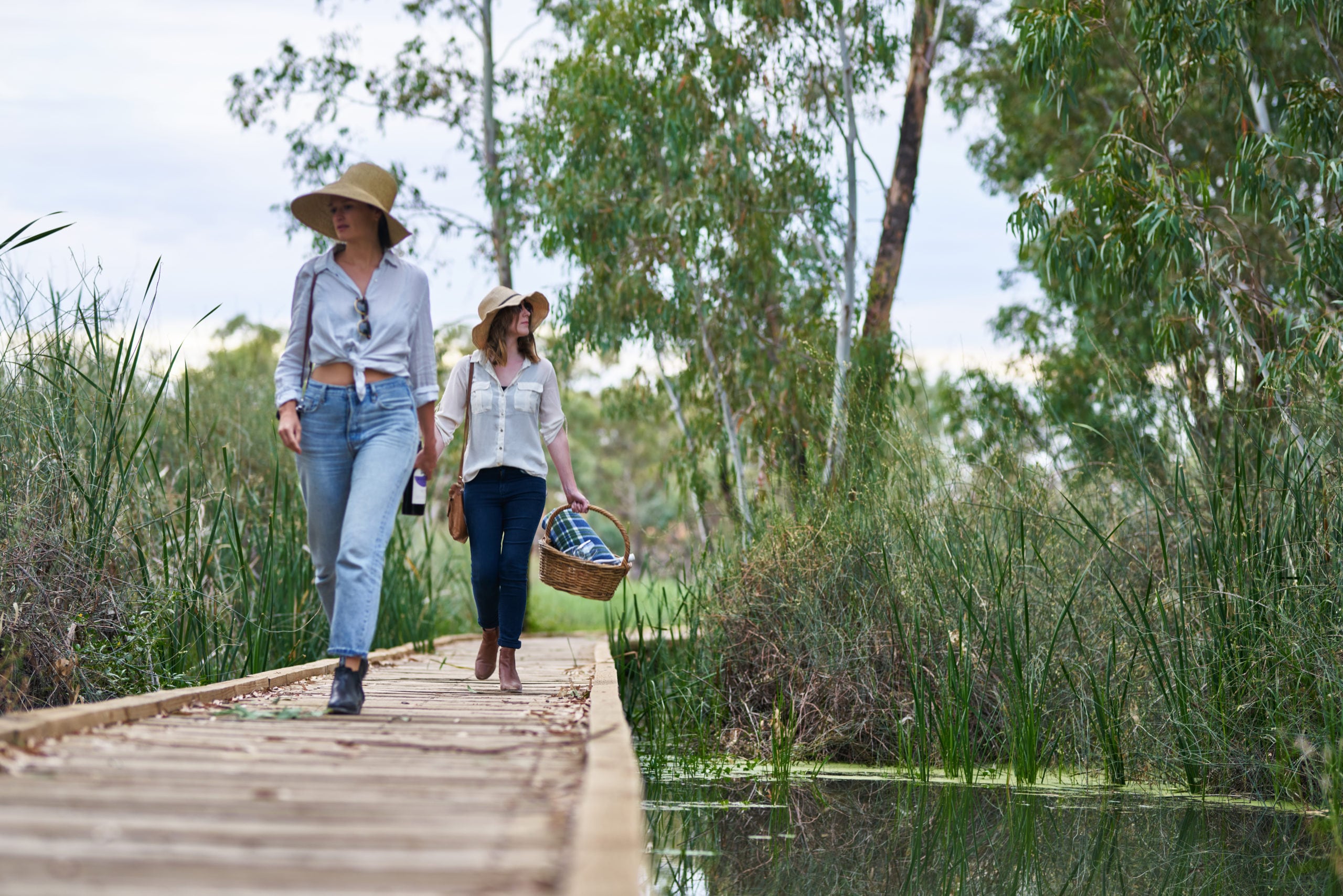Regent parrots thriving in SA wetland

PASSION DRIPS from Tim Field’s every word when he speaks about eastern regent parrots. The wetland manager at Banrock Station in South Australia is, it’s fair to say, smitten with these striking birds.
“September–October is regent parrot survey time,” Tim says, “so we’re up well before dawn to make sure we’re at the wetland’s to track the fly-in, fly-out breeding population.”
Listed as vulnerable, the bird relies on two habitat types for its survival – nesting habitat in mature river red gums within 20m of water and feeding habitat in nearby mallee country. Restrictions in the free flow of water in the Murray River and land clearing have negatively affected both of these habitats.
Banrock Station’s Ramsar-listed wetland is dotted with river red gums, and is therefore the ideal breeding ground. “The parrots nest in the gums, sitting on the eggs for two to three weeks,” Tim says. “And stay for another month or so, until the chicks are fledging.”

The dawn starts, for Tim, mean he is able to watch males fly in to feed the females, and the chicks too once they’ve hatched. “This is how we spot the individual nests,” he says. “Because the females choose small, discreet hollows with very small openings – to protect their eggs from other birds like rosellas, that throw them out of the nest, and cockatoos, and goannas that eat the eggs – they’re hard to spot. The males, thankfully for us, give their position away.”
As well as providing vital habitat to the regent parrot, Banrock Station wetland, which is located on the floodplain of the River Murray about 3km north-west of Kingston, also hosts 190 bird species, including the black swan, Australian shelduck, grey teal, whistling kite, Australian white ibis, Eurasian coot, chestnut teal, blue-billed duck, brown quail, red-backed kingfisher and blue-faced honeyeater. There’s an 8km walkway that takes visitors around the wetland, stopping off at five bird hides.

“Since 1994, we have been restoring the wetlands through a number of activities including reintroducing natural wetting and drying cycles in the wetland, planting thousands of native trees and shrubs, and creating a haven for native wildlife,” Tim says.
In 2002, the wetland was listed under the Ramsar Convention on Wetlands, recognising its international significance as habitat for threatened species and migratory birds. The natural habitat zones on the property exist side-by-side with Banrock Station vineyards, which comply with the highest environmental standards.
For more information head to Banrock Station, where every drop matters.

